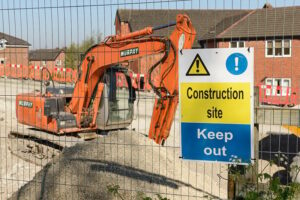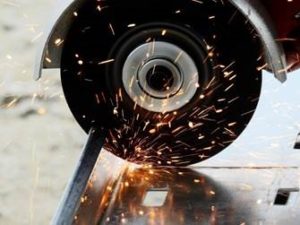Dr Karen McDonnell, RoSPA’s Occupational Health and Safety Policy Adviser and Head of RoSPA Scotland, is urging employers to look at ways to protect the health of construction workers.
 While safety in construction is, rightfully, a well-publicised concern, less attention is given to health issues.
While safety in construction is, rightfully, a well-publicised concern, less attention is given to health issues.
However, three-quarters of working days lost in the industry are due to work-related illness and people in construction also have a significantly higher risk of some specific conditions than those in other industries.
According to the Health and Safety Executive (HSE), construction has the largest burden of occupational cancer amongst the industrial sectors, accounting for over 40% of occupational cancer cases (more than 5,000 each year) and deaths (around 3,700 deaths annually). Most of these are asbestos-related (70%), followed by those related to working with silica (17%), working as a painter (7%) and exposure to diesel engine exhaust (7%).
Further reading: HSE fatality figures show year on year increase – construction again most vulnerable
Conditions such as occupational asthma, Chronic Obstructive Pulmonary Disease (COPD) and contact dermatitis can also result from exposure to hazardous substances in the industry, including dust, cement, lead and solvents.
Physical health risks
Construction workers face many physical health risks. Of the 78,000 workers suffering from work-related ill health averaged over the three-year period 2019/20-2021/22, a staggering 53% were affected by musculoskeletal disorders – that’s 2% of the entire workforce and much higher than the rate across all industries (1.1%).
 Other physical risks faced by construction workers include occupational deafness, caused by excessive exposure to noise, and hand-arm vibration, caused by use of handheld tools. And, like workers in every industry, many thousands are affected by mental health conditions such as stress, depression or anxiety. This caused 27% of the cases of ill-health recorded between 2019/20-2021/22.
Other physical risks faced by construction workers include occupational deafness, caused by excessive exposure to noise, and hand-arm vibration, caused by use of handheld tools. And, like workers in every industry, many thousands are affected by mental health conditions such as stress, depression or anxiety. This caused 27% of the cases of ill-health recorded between 2019/20-2021/22.
HSE offers lots of excellent guidance for both employers and workers on reducing these health risks. Other great sources of advice include the range of professional and trade bodies.
RoSPA was part of the team that created the Health Risks at Work toolkit, which is designed to provide simple, concise information to help small businesses manage five key health at work risk areas (breathing; skin; muscles, bones and joints; hearing and touch; and wellbeing). This resource is a good way to start engaging with this topic.
In addition to work-related illnesses, the construction industry also has an ageing workforce. Office for National Statistics data for 2019 showed that of the 2,339,012 workers in the construction industry, 34% were aged between 40-54 (783,952), while 17% were aged 55-64 and 4% were over 65-years-old.
This means many workers will be bringing chronic illnesses and health conditions to work with them, so it is vital for the industry to be mindful of this and apply the knowledge and support already developed at work to employees’ whole lives.
So how can employers begin to tackle health risks?
The mantra “pause, reflect and reset” seems pertinent here.
P Prioritise your people
A Assess the risks to worker health, remaining situationally aware
U Update your risk management plan to reflect worker health risks
S Speak to your people
E Evaluate the impact of the changes you have made, share what works.
The value to business of having safe, healthy and productive working people should not be under-estimated.
The Safety Conversation Podcast: Listen now!
The Safety Conversation with SHP (previously the Safety and Health Podcast) aims to bring you the latest news, insights and legislation updates in the form of interviews, discussions and panel debates from leading figures within the profession.
Find us on Apple Podcasts, Spotify and Google Podcasts, subscribe and join the conversation today!

 While safety in construction is, rightfully, a well-publicised concern, less attention is given to health issues.
While safety in construction is, rightfully, a well-publicised concern, less attention is given to health issues. Other physical risks faced by construction workers include occupational deafness, caused by excessive exposure to noise, and hand-arm vibration, caused by use of handheld tools. And, like workers in every industry, many thousands are affected by mental health conditions such as stress, depression or anxiety. This caused 27% of the cases of ill-health recorded between 2019/20-2021/22.
Other physical risks faced by construction workers include occupational deafness, caused by excessive exposure to noise, and hand-arm vibration, caused by use of handheld tools. And, like workers in every industry, many thousands are affected by mental health conditions such as stress, depression or anxiety. This caused 27% of the cases of ill-health recorded between 2019/20-2021/22.